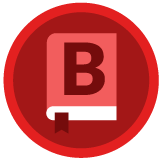Introduction
Introduction
Past years
Image: A conversation about their childhood
Vocabulary: Past Events
Vocabulary: Past Events
Grammar: Simple past with the verb be and other verbs
Exercise: Complete sentences about the past
Personalization: A composition about the past
Reading: Childhood years
Experiences at school
Conversation: At school
Vocabulary: Types of determiners
Grammar: How to use determiners
Exercise: Multiple choice using determiners
Personalization: Writing exercise
Neighbourhood
Image: Conversation about the neighborhood
Vocabulary: A map with places in the city
Grammar: Expressions to give directions in the city
Image: Directions exercise
Personalization: Drawing and writing
Reading: A letter that describes the neighborhood
Holidays and trips
Conversation: Its a great place to visit
Image: Landscapes and attitudes
Grammar: The expression its + adjective + to verb
Exercise: Use adjectives to describe the following activities
Personalization: Speaking about a place that you have visited
Reading: How to plan a trip to a foreign country
Belongings
Conversation: Two people talking about belongings
Image: People who have some belongings
Grammar: The use of whose and possessive pronouns
Image: Completing exercise
Personalization: Writing exercise
Reading: About belongings
Things happen
Image: People describing things that happen in the past
Grammar: Reflexive pronouns and the past continuous
Exercise: Complete the sentences
Personalization: Speaking exercise
Reading: Things that happened in the past
Conclusion
Conclusion
Crie uma conta ou faça login
Continue aprendendo! Junte-se e comece a impulsionar sua carreira

Grammar: Simple past with the verb be and other verbs
5/37We use the simple past with the verb be to talk about how things were before.
- I was young when we moved.
- She was a very good student at school.
- He wasn´t very quiet when he was a kid.
- Was it too difficult?
- You were very good students at school.
The structure is:
- If we have an affirmative sentence: We have a subject, then we have the verb be conjugated in past and then we have the complement: + Subject + verb be + complement.
- If it is a negative sentence: We have the subject, then we have the verb be in past, then we have not and after that we have the complement: - Subject + verb be + not + complement.
- If it is a question: Remember that you can always use a WH question before the verb be, then we have the verb be, after that we have the subject and the complement and finally the question mark: ? Verb be + subject + complement + ?
Always remember to use a question mark at the end. It’s different from spanish because in spanish we have two question marks.
For other verbs, the simple past is formed by adding -ed at the end of the verb:
- We moved to Canada when I was 5.
- I accepted the job and moved to Mexico.
- She didn’t work there for so long.
There are some verbs that change:
- She spoke English and Portuguese.
- He had a very good friend when he was a kid.
- They didn’t spend time watching TV.
Contribuições 0
Perguntas 0
Quer ver mais contribuições, perguntas e respostas da comunidade?